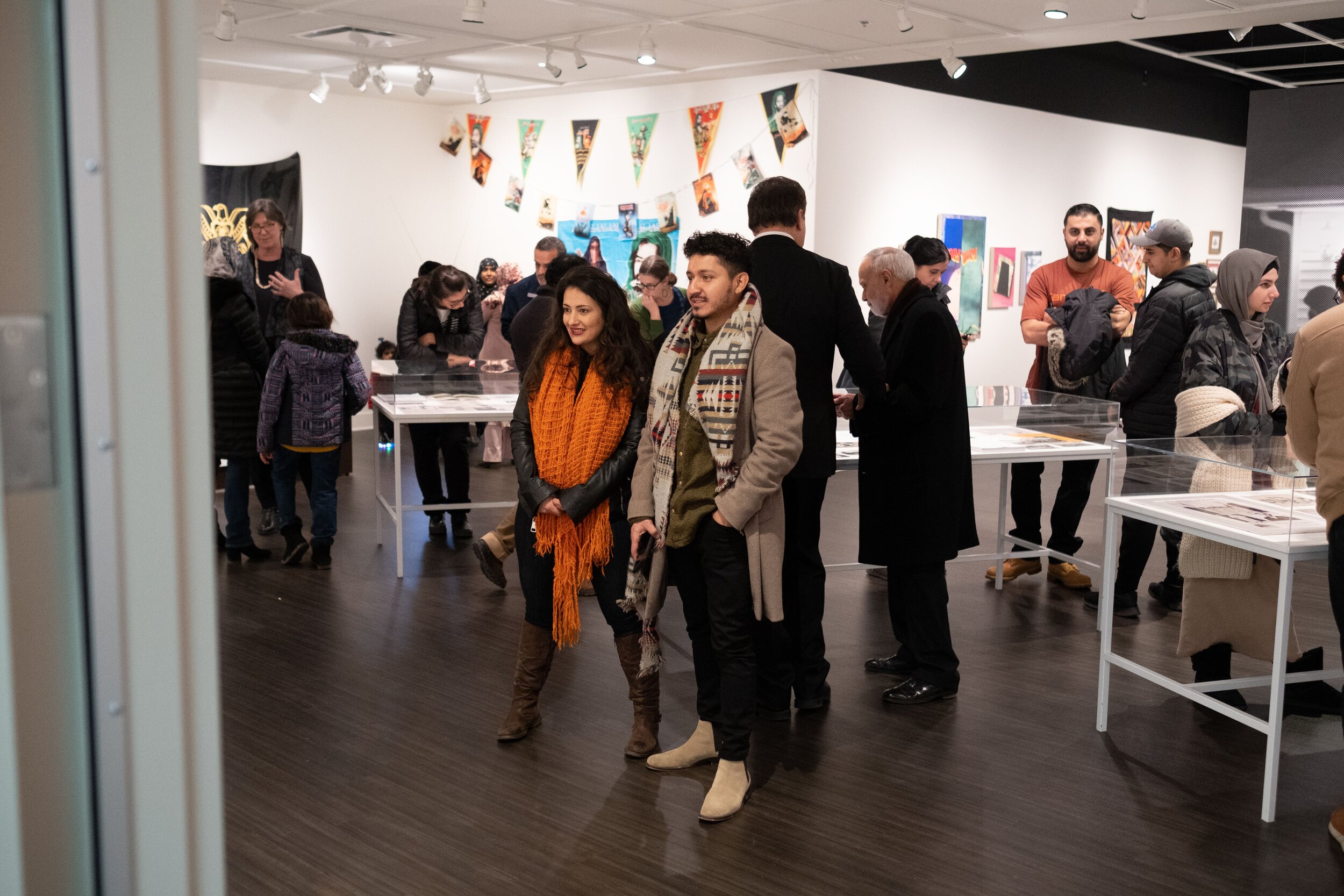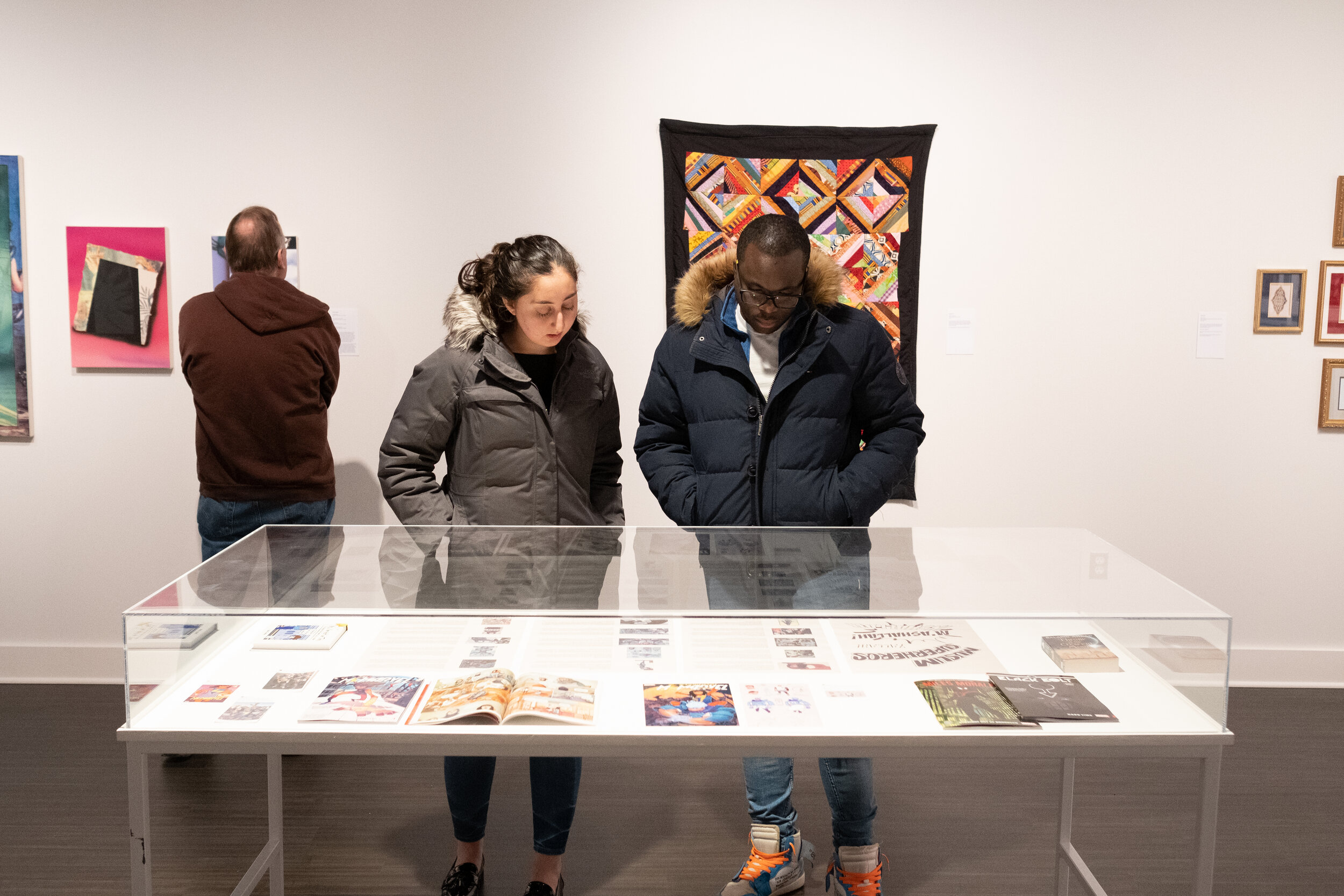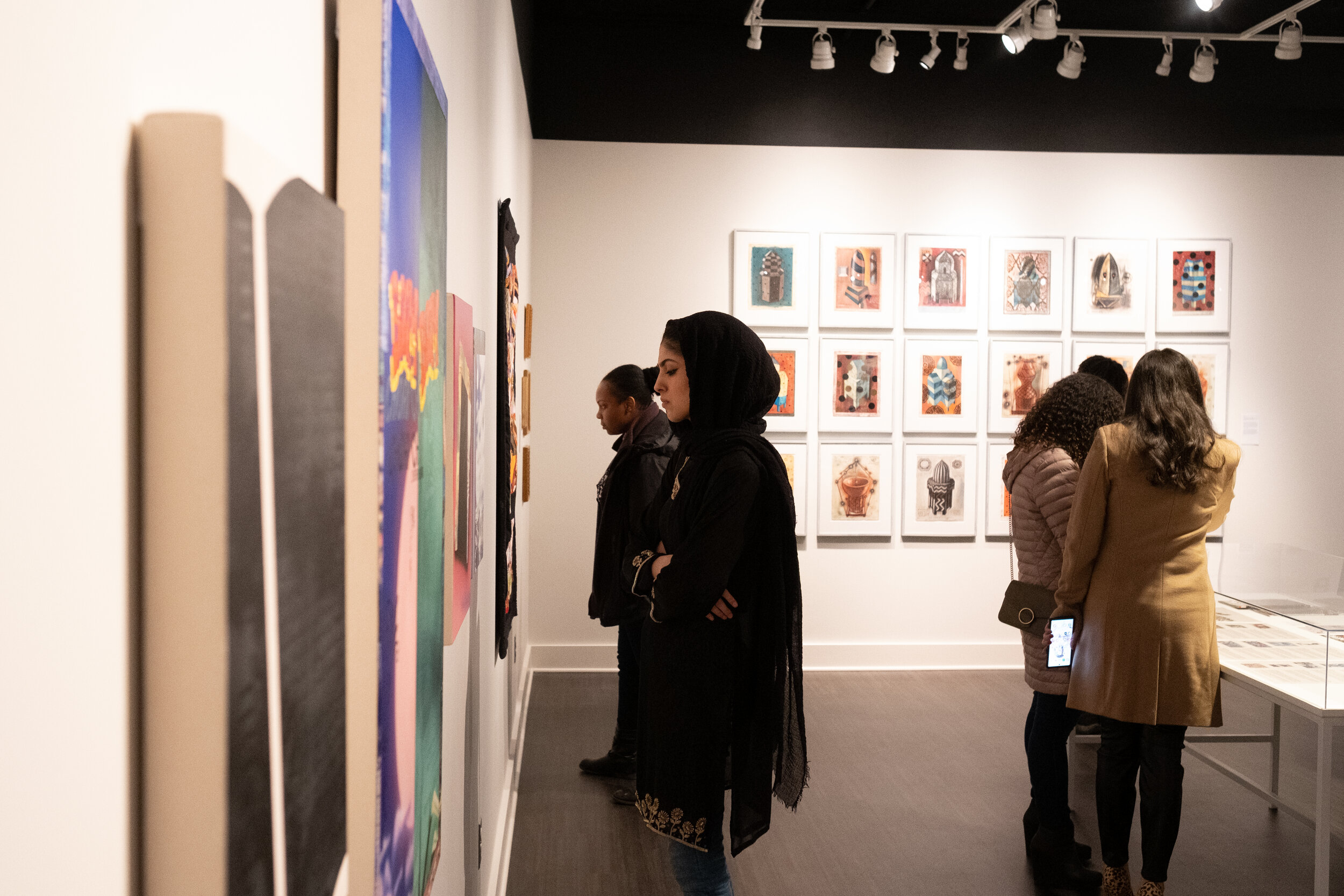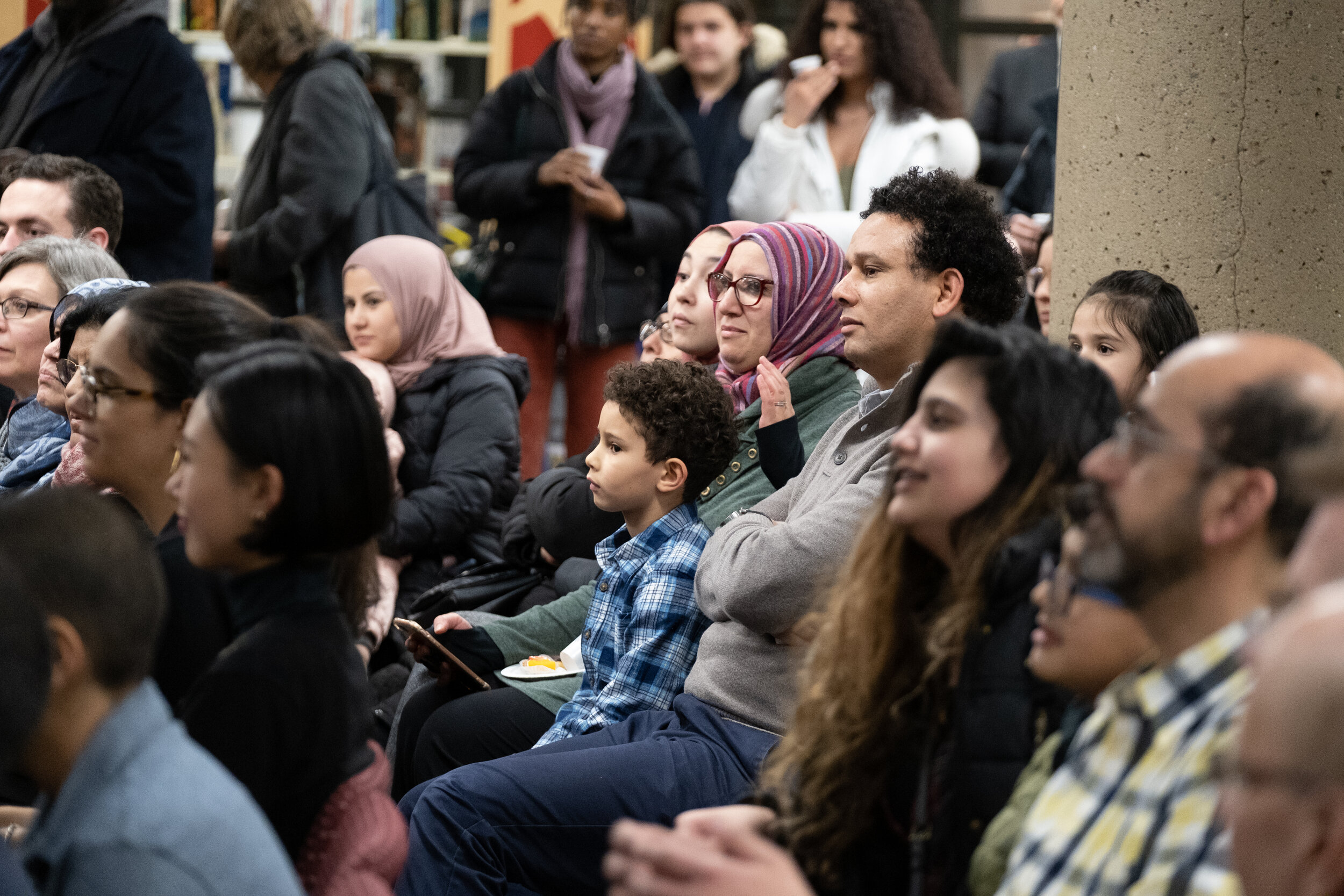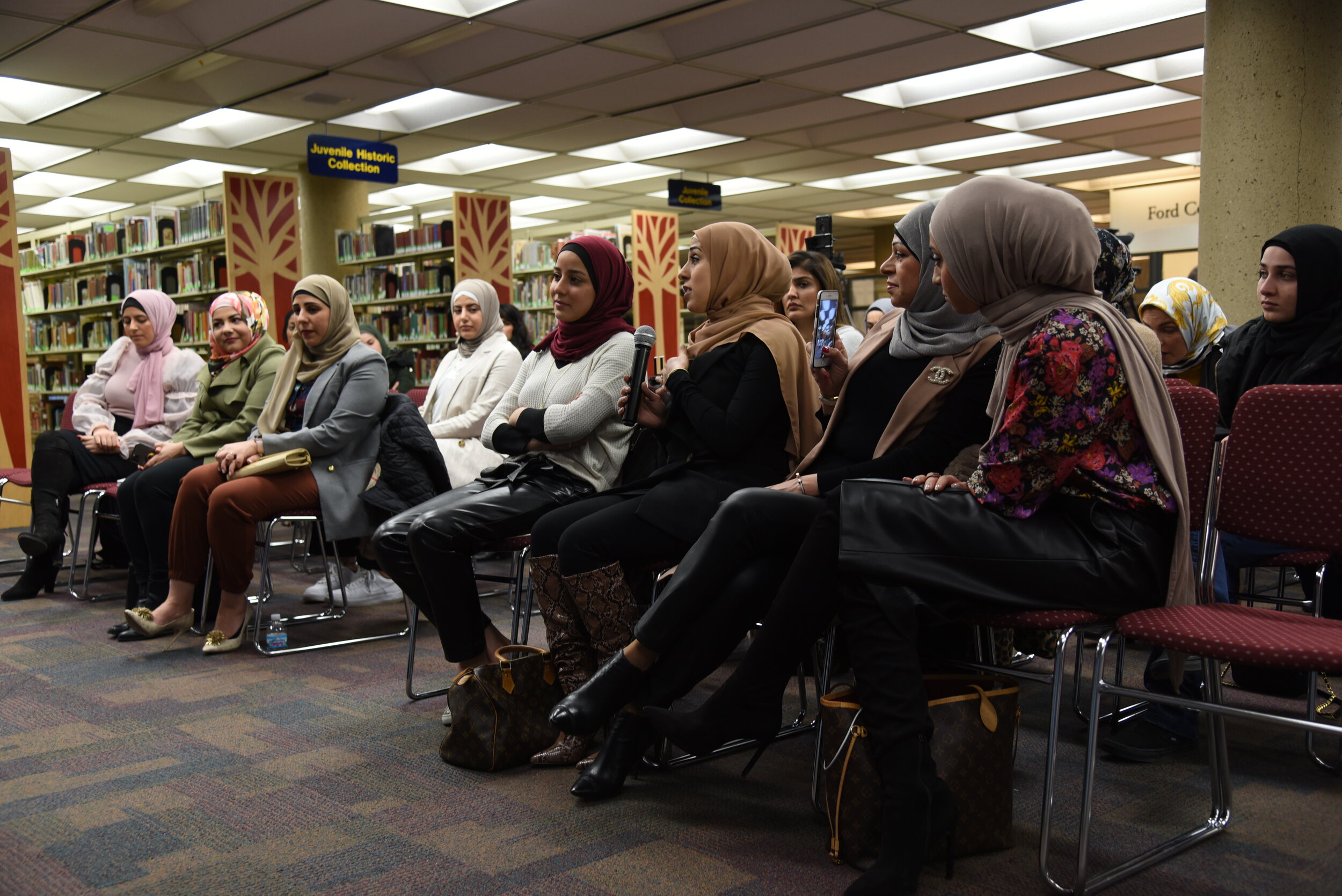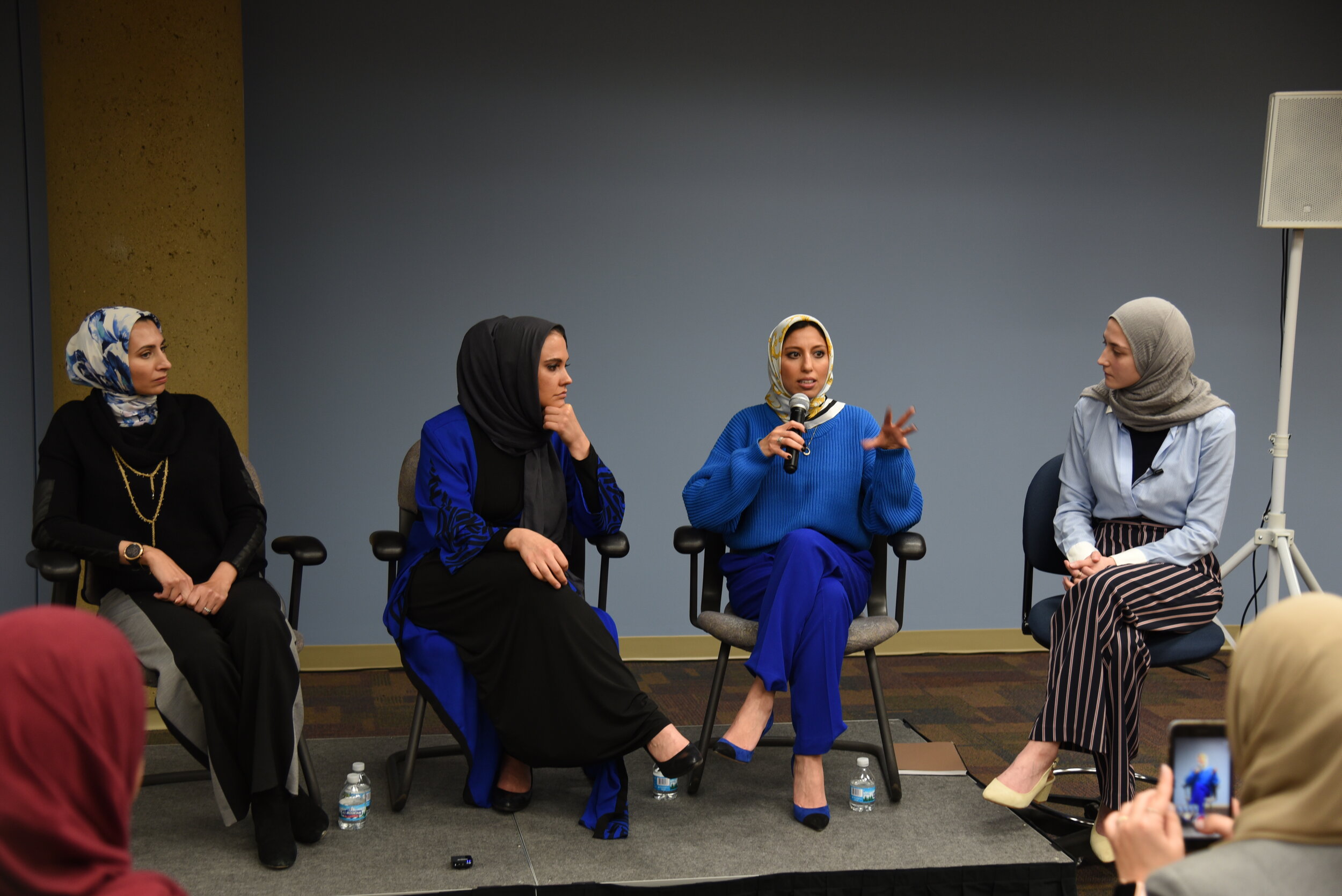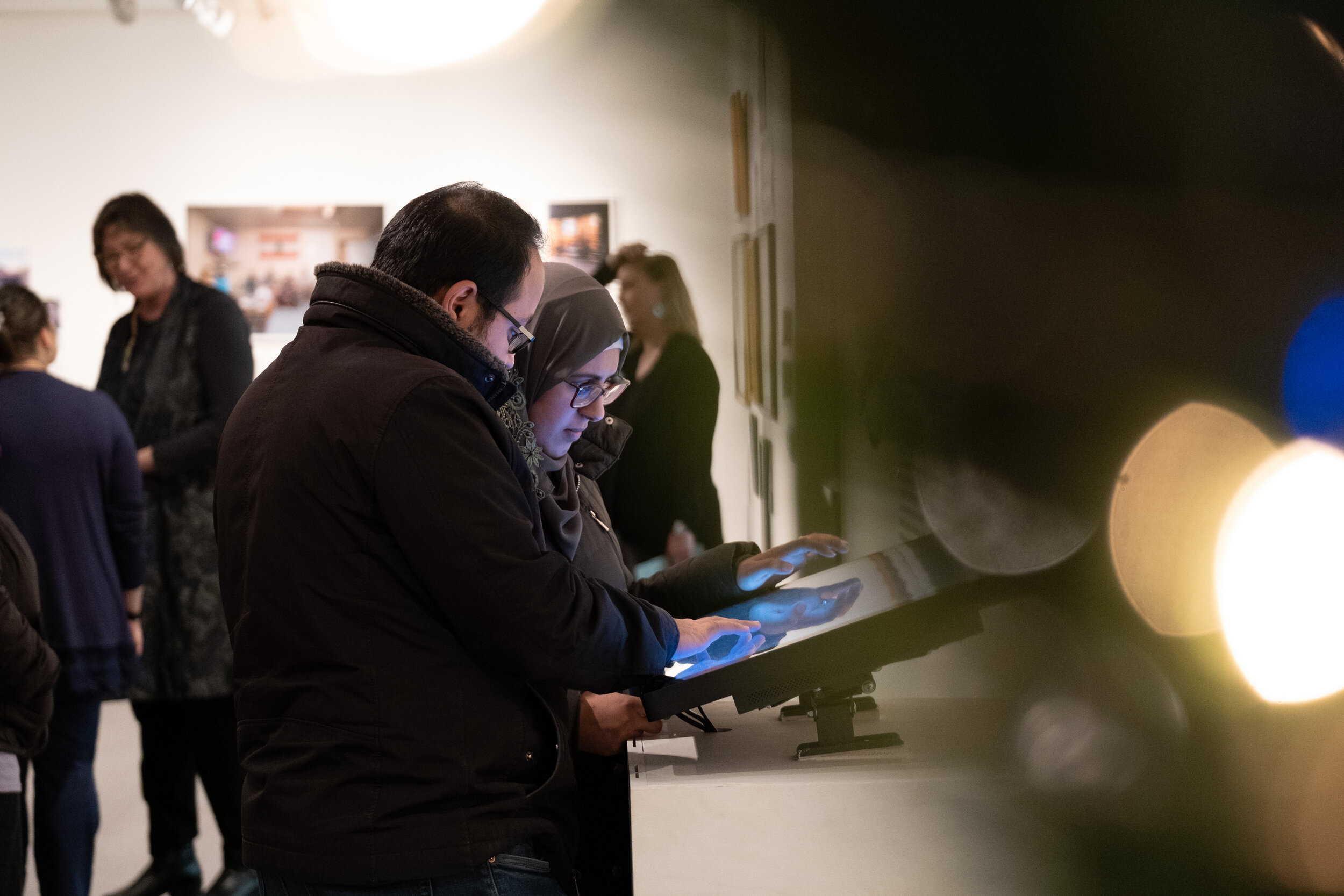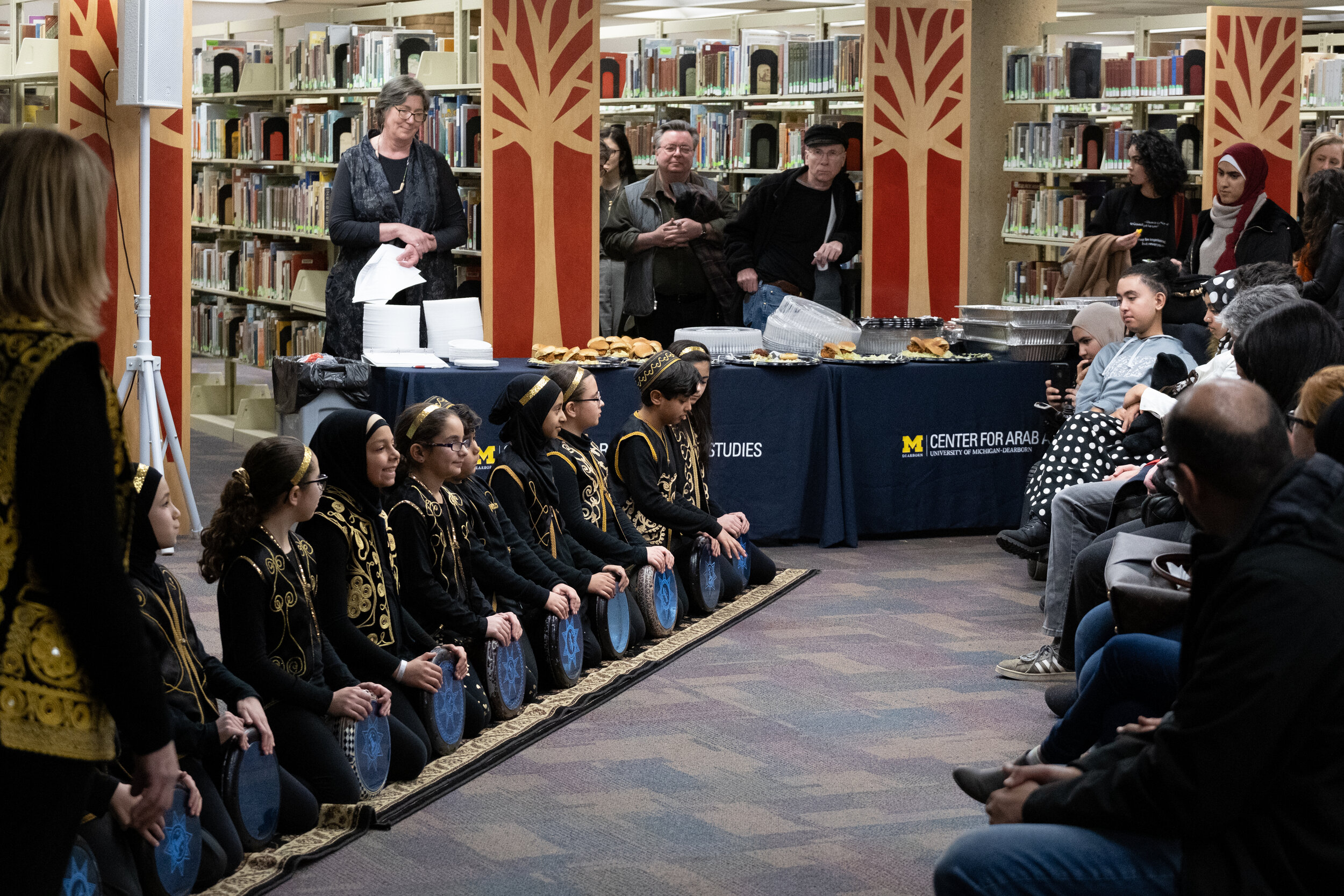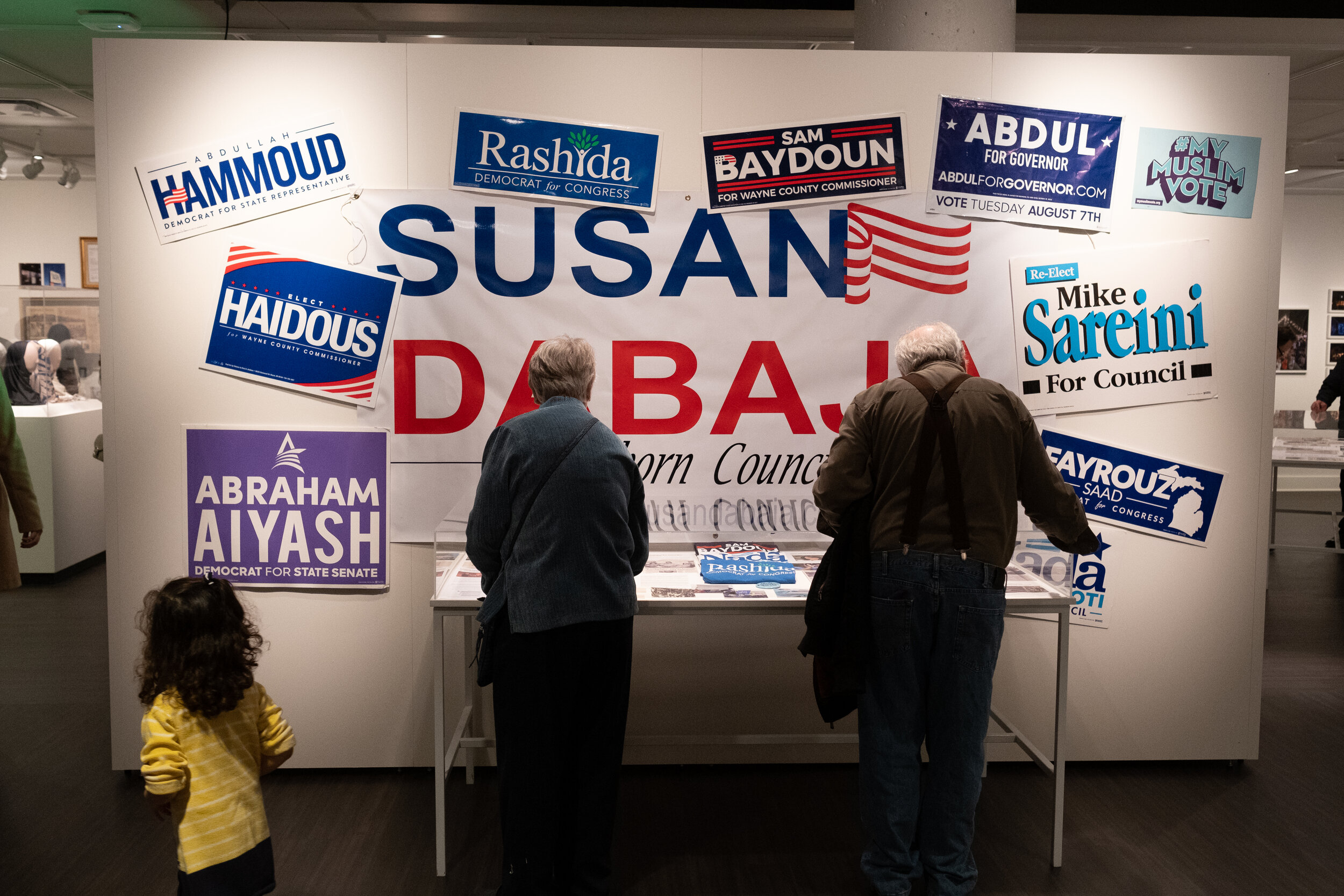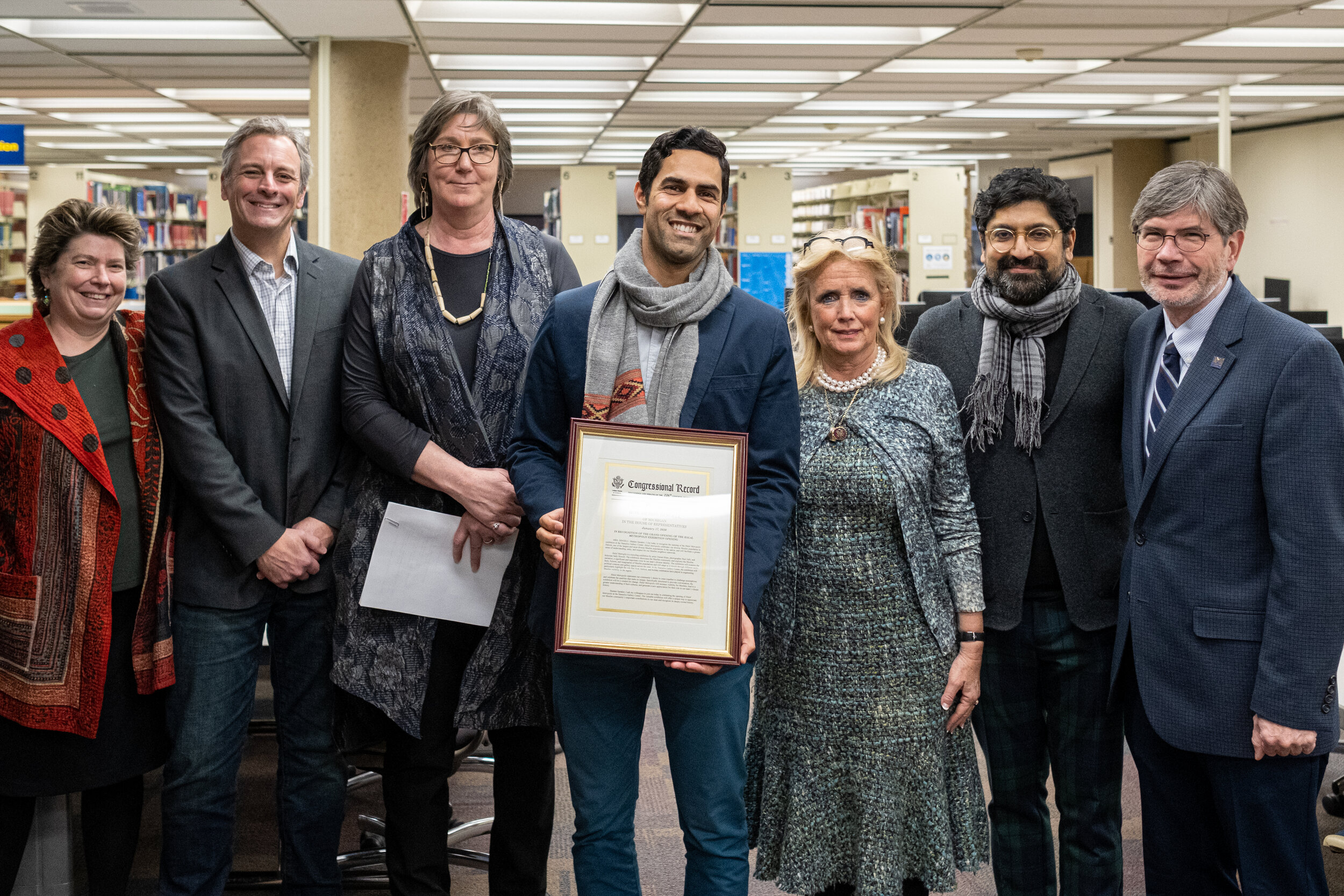Dearborn
Stamelos Gallery
University of Michigan - Dearborn
January 17 - April 3, 2020
The Halal Metropolis is one where Muslims practice their faith freely, and contribute to society with all of their talents and commitments. It is created dialogically and requires Muslims to be visible to one another and to non-Muslims. It encourages Muslims to organize and speak as believers, citizens, and artists. Nowhere is this halal metropolis more prominent than in Dearborn, where halal restaurants and the hijab are ubiquitous and the state’s oldest and largest mosques are located.
Arab and Turkish Muslims began working at Ford’s Rouge factory and moving to Dearborn before the city was incorporated in 1929. A small minority at the time, they opened their first mosques in its shadow in the 1930s. When US immigration laws changed in the 1960s, these mosques welcomed new arrivals from the Middle East and South Asia and inspired them to build their own mosques across the metro area. Today there are 11 mosques in Dearborn and 96 in the tri-county area.
Yet the halal metropolis has its greatest impact outside these mosques. This was first seen in the coffee houses and groceries that provided Dearborn’s Arab immigrants with a taste of home. The first halal butcher opened in Dearborn in the 1950s, and the culinary scene has never looked back. No longer limited to Lebanese restaurants and bakeries, the halal scene in Dearborn now includes Iraqi, Yemeni, and Syrian cuisine, and highly innovative bistros, patisseries, burger joints and hotdog stands.
The hijab did not become common in Dearborn until the 1980s, but today it is worn by police officers, school superintendents, high school athletes and judges alike. Neighborhood hijab shops now compete with national chains, and local designers are at the fore of the global Islamic fashion industry. Many non-hijabis also signal their faith with tattoos, car decals, jewelry, architectural design, and the full range of aesthetic practices. With so many Muslim communities sharing space in Dearborn the desire to stand out – or to blend in – is intense.
Yet while Dearborn’s Arab community has long been the most visible Muslim population in the US, it has struggled to achieve effective political representation. Only recently has the city sent an Arab American to the state legislature, or seen an Arab majority City Council. The community is better represented in appointed positions than elected ones. Yemeni and Iraqi voters are also eager for the Lebanese establishment to share its limited power.
Islamic holidays also make Dearborn distinctive. The flags and parades of Ashura are difficult to miss in some neighborhoods, as are the twinkling lights of Ramadan when night and day switch places for a month and piety and consumerism compete with one another for the true meaning of the season. What could be more American than this?
In this fourth iteration of the Halal Metropolis series, we focus on Dearborn to consider what makes, and has made, Detroit’s Muslims so very visible over the last century. When and why are Detroit’s Muslims visible? To whom? At what cost? How do artists help shape this narrative? How do you?
Participating Artists:
Amna Asghar
Nour Ballout
Adnan Charara
Kecia Escoe
Anthony Giannini
Razi Jafri
Endi Poskovic
Reem Taki
Maamoul Press
Special Thanks:
Ali Al Joum, Ahmad Ali, Abbas Ammar, Ronnie Berry, Nasser Beydoun, Sam Beydoun, Susan Dabaja,Elizabeth Karg, Jeff Mallad, Suzanne Sareini, Salah Sarhan, Batoul Shatila,Matthew Stiffler, Arab American National Museum, Bentley Historical Library
Fashion Influencers
Lisa Vogl, Rahaf Khatib, and Melanie Elturk
We speak with a trio of hijabi fashion influencers.
Culinary Pioneers
Ibrahim Alhasbani, Ronnie Berry, Jeff Mallad, and Abbas Ammar
We speak with the food pioneers of Dearborn.


